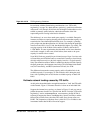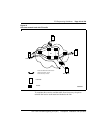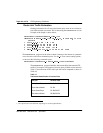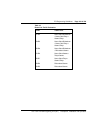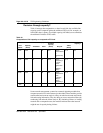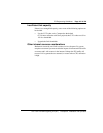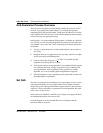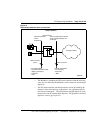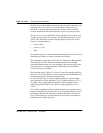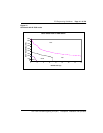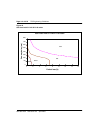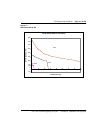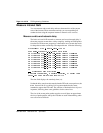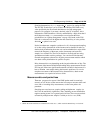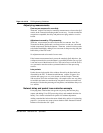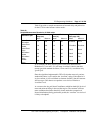
Page 110 of
378
ITG Engineering Guidelines
553-3001-202 Standard 1.00 April 2000
The ITG node can be enabled to monitor the intranet's QoS. In this mode, two
parameters, the receive fall back threshold and the transmit fall back
threshold, on the ITG node then dictate the minimum QoS level of ITG
network. Note that the fall back thresholds are set on a pair site pair basis.
The QoS level is a user-oriented QoS metric and takes on one of these four
settings: excellent, good, fair, and poor, which indicate the quality of voice
service. ITG periodically calculates the prevailing QoS level per site pair
based on its measurement of
• one-way delay
• packet loss, and
• codec
and when the QoS level is below the fall back threshold, any new calls to that
destination are routed over circuit-switched voice facilities.
The computation is derived from ITU-T G.107 Transmission Rating Model.
When the QoS level falls below the fall back threshold levels for that
particular destination, that call is not accepted by the originating ITG node;
instead the call is re-routed by Meridian 1 ESN features over traditional
circuit-switched voice facilities.
The following graphs (Figures 15, 16, and 17) show the operating regions in
terms of one-way delay and packet loss for each codec and required QoS level
as determined by ITG. Note that among the codecs
G.711(A-law)/G.711(u-law) delivers the best quality for a given intranet
QoS, followed by G.729A and then G.723.1 (6.4 kbp/s) and lastly G.723.1
(5.3 kbp/s). These graphs determine the delay and error budget for the
underlying intranet in order for it to deliver a required quality of voice
service.
Fax is more susceptible to packet loss than the human ear is; quality starts to
degrade when packet loss exceeds 10%. It is recommended that fax services
be supported with the ITG operating in either the Excellent or Good QoS
level. Avoid offering fax services between site pairs that can guarantee no
better than a Fair or Poor QoS level.



